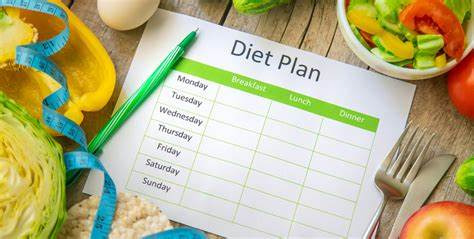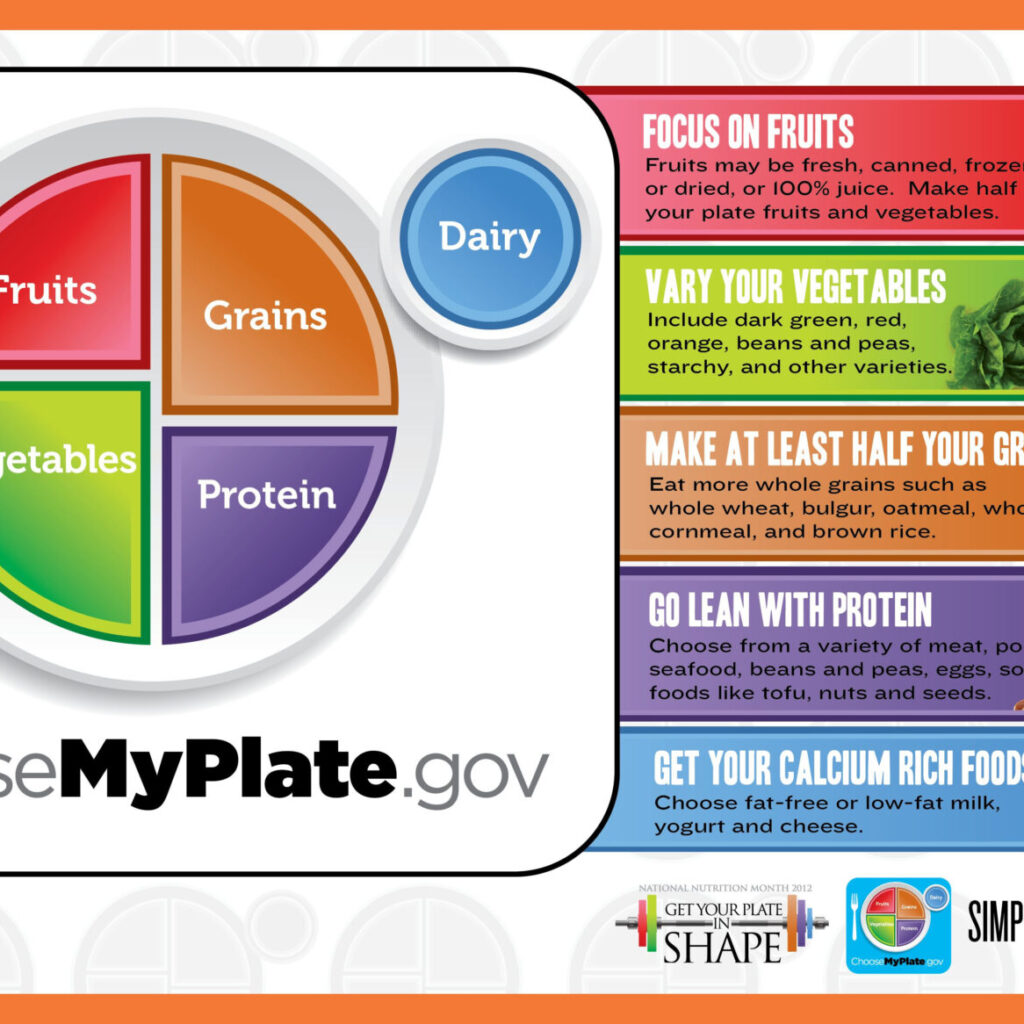
Introduction
Eating well is important at any age, but especially for older adults who may have specific nutritional needs and health challenges. A healthy eating plan can help seniors and older adults maintain a healthy weight, prevent or manage chronic diseases, and improve their quality of life. In this article, we will explore what a healthy eating plan for seniors and older adults looks like, what are the benefits of following one, and what are some tips and resources to help you or your loved one eat well as you age.
What is a healthy eating plan for seniors and older adults?

A healthy eating plan for seniors and older adults is not very different from the general recommendations for healthy eating for all adults. According to the Dietary Guidelines for Americans 2020-2025, a healthy eating plan should include a variety of foods from all the food groups: vegetables, fruits, grains, protein foods, dairy products, and oils. It should also limit the intake of added sugars, saturated fats, sodium, and alcohol. A healthy eating plan should provide enough calories and nutrients to meet the individual’s needs, preferences, and goals, while taking into account any medical conditions or dietary restrictions.
However, there are some specific considerations for seniors and older adults when it comes to healthy eating. For example, older adults may need fewer calories than younger adults, but they may need more of certain nutrients, such as protein, calcium, vitamin D, vitamin B12, and fiber. Older adults may also face some barriers to healthy eating, such as changes in appetite, taste, smell, digestion, and metabolism, as well as dental problems, medication side effects, social isolation, depression, and limited access to food. Therefore, a healthy eating plan for seniors and older adults should be tailored to their individual needs and circumstances, and should be flexible and enjoyable.
What are the benefits of a healthy eating plan for seniors and older adults?

A healthy eating plan for seniors and older adults can have many benefits for their physical and mental health, as well as their overall well-being. Some of the benefits are:
- It can help prevent or manage chronic diseases, such as diabetes, heart disease, high blood pressure, osteoporosis, and some cancers.
- It can help maintain or improve muscle mass, strength, and function, which can reduce the risk of falls, fractures, and disability.
- It can help support the immune system, which can protect against infections and inflammation.
- It can help maintain or improve cognitive function, memory, and mood, which can prevent or delay the onset of dementia and depression.
- It can help promote healthy skin, hair, nails, and vision, which can enhance self-esteem and quality of life.
Tips and resources for a healthy eating plan for seniors and older adults

Creating and following a healthy eating plan for seniors and older adults may seem challenging, but it does not have to be. Here are some tips and resources to help you or your loved one eat well as you age:
- Use the MyPlate tool from the USDA to plan your meals and snacks. The MyPlate tool can help you choose the right portions and types of foods from each food group, based on your age, sex, height, weight, and activity level. You can also find sample menus, recipes, tips, and quizzes to help you eat healthy.
- Choose nutrient-dense foods that provide a lot of vitamins, minerals, and other beneficial substances, such as antioxidants and phytochemicals, with relatively few calories. Examples of nutrient-dense foods are vegetables, fruits, whole grains, lean proteins, low-fat dairy, nuts, seeds, and legumes. Avoid or limit foods that are high in calories but low in nutrients, such as sweets, pastries, chips, soda, and alcohol.
- Eat enough protein throughout the day to prevent the loss of muscle mass and strength, which can affect your mobility and independence. Aim for about 0.8 grams of protein per kilogram of body weight per day, or about 56 grams for a 70-kilogram (154-pound) person. You may need more protein if you have a wound, infection, or chronic disease. Good sources of protein include eggs, fish, poultry, meat, dairy, soy, beans, peas, lentils, nuts, and seeds. You can also use protein powders, shakes, or bars to supplement your intake, but check with your doctor first.
- Get enough calcium and vitamin D to keep your bones strong and prevent osteoporosis. Calcium and vitamin D work together to help your body absorb and use calcium. The recommended daily intake of calcium for adults over 50 is 1,200 milligrams, and the recommended daily intake of vitamin D for adults over 70 is 800 international units. You can get calcium from dairy products, fortified plant milks, tofu, sardines, salmon, broccoli, kale, and almonds. You can get vitamin D from sunlight, fatty fish, egg yolks, mushrooms, and fortified foods, such as milk, cereal, and orange juice. You may also need to take a supplement if you do not get enough from your diet or sun exposure, but check with your doctor first.
- Include foods that are rich in vitamin B12, which is essential for the production of red blood cells and the maintenance of nerve function. Vitamin B12 deficiency can cause anemia, fatigue, weakness, numbness, tingling, confusion, and memory loss. Older adults may have trouble absorbing vitamin B12 from animal sources, such as meat, poultry, fish, eggs, and dairy, due to reduced stomach acid or medication use. Therefore, they may benefit from eating foods that are fortified with vitamin B12, such as some cereals, breads, and plant milks, or taking a supplement. The recommended daily intake of vitamin B12 for adults over 50 is 2.4 micrograms.
- Increase your fiber intake to help keep your bowel movements regular and prevent constipation, hemorrhoids, diverticulitis, and colon cancer. Fiber can also help lower your cholesterol and blood sugar levels, and make you feel fuller longer, which can help you control your weight. The recommended daily intake of fiber for adults over 50 is 30 grams for men and 21 grams for women. You can get fiber from fruits, vegetables, whole grains, beans, peas, lentils, nuts, and seeds. You can also use fiber supplements, such as psyllium, methylcellulose, or wheat dextrin, but check with your doctor first. Make sure to drink plenty of water as you increase your fiber intake, as fiber can cause bloating, gas, and dehydration if you do not drink enough fluids.
- Drink enough fluids to stay hydrated and prevent dehydration, which can cause headaches, dizziness, confusion, urinary tract infections, and kidney stones. Fluids can also help you digest your food and absorb your nutrients. The recommended daily intake of fluids for adults over 50 is about 3 liters for men and 2.2 liters for women. You can get fluids from water, milk, juice, tea, coffee, soup, and fruits and vegetables. However, limit your intake of fluids that contain added sugars, caffeine, or alcohol, as they can increase your calorie intake, dehydrate you, or interact with your medications. Drink more fluids if you exercise, sweat, have a fever, or have diarrhea or vomiting.
- Add flavor and variety to your meals and snacks with herbs, spices, citrus, vinegar, and other seasonings, instead of salt, sugar, or fat. This can help you reduce your intake of sodium, which can raise your blood pressure and increase your risk of stroke, heart disease, and kidney disease. It can also help you cut down on added sugars, which can contribute to obesity, diabetes, and dental problems. And it can help you limit your intake of saturated fats, which can raise your cholesterol and increase your risk of heart disease and stroke. Experiment with different flavors and cuisines, and try new recipes and foods that appeal to your taste buds and preferences.
- Plan your meals and snacks ahead of time, and shop for healthy foods on a budget. Planning your meals and snacks can help you eat more balanced and nutritious foods, and avoid skipping meals or overeating. It can also help you save money and reduce food waste. You can use the MyPlate tool to plan your meals and snacks, and use the MyPlate Plan Widget to get a personalized plan based on your age, sex, height, weight, and activity level. You can also use the MyPlate Kitchen to find recipes, create shopping lists, and track your food intake. To shop for healthy foods on a budget, you can use the following tips:
- Compare prices and use coupons or discounts when possible.
- Buy fruits and vegetables that are in season, frozen, canned, or dried, as they are usually cheaper and last longer than fresh ones.
- Buy grains, beans, peas, lentils, nuts, and seeds in bulk, as they are usually cheaper and can be stored for a long time.
- Buy lean proteins, such as chicken, turkey, fish, eggs, and tofu, instead of fatty meats, such as beef, pork, and lamb, as they are usually cheaper and healthier.
- Buy low-fat or fat-free dairy products, such as milk, yogurt, and cheese, instead of full-fat ones, as they are usually cheaper and lower in calories and saturated fat.
- Buy generic or store brands, instead of name brands, as they are usually cheaper and have similar quality and nutrition.
- Eat with others whenever possible, and join a senior meal program if you need help with getting or preparing food. Eating with others can make your meals more enjoyable and social, and can also help you eat more balanced and varied foods. It can also help you cope with loneliness, depression, and anxiety, which can affect your appetite and health. If you live alone or have trouble getting or preparing food, you can join a senior meal program, such as Meals on Wheels, which can deliver nutritious meals to your home or offer congregate meals at a senior center or other community location. You can find a senior meal program near you by visiting the [Eldercare Locator] or calling 1-800-677-1116.
- Consult your doctor, dietitian, or pharmacist before making any changes to your diet or taking any supplements. Your doctor can assess your health status and nutritional needs, and advise you on the best eating plan for you. Your dietitian can help you plan your meals and snacks, and provide you with tips and resources to eat well. Your pharmacist can review your medications and supplements, and check for any potential interactions or side effects that may affect your appetite or nutrition. You can also ask your doctor, dietitian, or pharmacist about any special dietary guidelines or restrictions that you may need to follow, such as for diabetes, kidney disease, food allergies, or swallowing difficulties.
RELATED
Mindfulness Benefits for Physical Health
Nutrient-Rich Foods for Reducing Inflammation
Conclusion
A healthy eating plan for seniors and older adults can have many benefits for their physical and mental health, and their overall well-being. A healthy eating plan for seniors and older adults should include a variety of foods from all the food groups, and limit the intake of added sugars, saturated fats, sodium, and alcohol. It should also provide enough calories and nutrients to meet the individual’s needs, preferences, and goals, while taking into account any medical conditions or dietary restrictions. A healthy eating plan for seniors and older adults should be tailored to their individual needs and circumstances, and should be flexible and enjoyable. Some tips and resources to help seniors and older adults eat well are to use the MyPlate tool, choose nutrient-dense foods, eat enough protein, calcium, vitamin D, vitamin B12, and fiber, drink enough fluids, add flavor and variety to meals and snacks, plan meals and snacks ahead of time and shop for healthy foods on a budget, eat with others whenever possible and join a senior meal program if needed, and consult a doctor, dietitian, or pharmacist before making any changes to diet or taking any supplements.
FAQs
Here are some frequently asked questions and answers about healthy eating for seniors and older adults:
- Q: How many calories do seniors and older adults need?
- A: The number of calories that seniors and older adults need depends on their age, sex, height, weight, and activity level. Generally, older adults need fewer calories than younger adults, as their metabolism slows down and their muscle mass decreases. However, they may need more calories if they are very active, have a wound, infection, or chronic disease, or are underweight. You can use the [MyPlate Plan Widget] to get an estimate of how many calories you need per day, based on your personal information and activity level.
- Q: What are some healthy snacks for seniors and older adults?
- A: Some healthy snacks for seniors and older adults are fruits, vegetables, whole grains, low-fat dairy, nuts, seeds, and lean proteins. These snacks can provide energy, fiber, vitamins, minerals, and other beneficial substances, and can also help you meet your daily nutritional needs. Some examples of healthy snacks are:
- A banana with peanut butter
- A cup of low-fat yogurt with berries and granola
- A slice of whole-wheat bread with cheese and tomato
- A handful of almonds and dried apricots
- A hard-boiled egg and a carrot
- Q: How can seniors and older adults prevent or treat constipation?
- A: Constipation is a common problem for seniors and older adults, as it can be caused by changes in digestion, medication use, dehydration, lack of exercise, or low-fiber diet. To prevent or treat constipation, seniors and older adults should:
- Increase their fiber intake by eating more fruits, vegetables, whole grains, beans, peas, lentils, nuts, and seeds.
- Drink enough fluids, especially water, to keep their stools soft and easy to pass.
- Exercise regularly, as physical activity can stimulate the bowel movements and improve blood circulation.
- Avoid or limit foods that are high in fat, sugar, or salt, such as fried foods, sweets, pastries, chips, and processed meats, as they can worsen constipation.
- Talk to their doctor, dietitian, or pharmacist about any medications or supplements that may cause constipation, and ask for alternatives or laxatives if needed.
- Q: How can seniors and older adults improve their appetite?
- A: Appetite can decrease with age, due to changes in taste, smell, digestion, metabolism, hormones, and emotions. This can lead to weight loss, malnutrition, and poor health. To improve their appetite, seniors and older adults should:
- Eat small and frequent meals and snacks, instead of large and infrequent ones, as this can help them feel less full and more hungry.
- Eat foods that are appealing and appetizing, such as foods that are colorful, flavorful, aromatic, and varied, and avoid foods that are bland, boring, or repetitive.
- Eat with others whenever possible, as this can make eating more enjoyable and social, and can also stimulate the appetite and encourage eating more.
- Try new foods and recipes, and experiment with different flavors and cuisines, as this can make eating more fun and interesting, and can also introduce new nutrients and tastes.
- Treat any underlying medical or psychological conditions that may affect the appetite, such as depression, anxiety, pain, infection, or dental problems, and consult a doctor, dietitian, or pharmacist about any medications or supplements that may affect the appetite, and ask for alternatives or appetite stimulants if needed.
- Q: What are some healthy eating tips for seniors and older adults with diabetes?
- A: Diabetes is a chronic condition that affects how the body uses glucose, or sugar, which is the main source of energy for the cells. Diabetes can cause high blood sugar levels, which can damage the organs and increase the risk of complications, such as heart disease, stroke, kidney disease, nerve damage, eye problems, and foot problems. To manage diabetes, seniors and older adults should:
- Follow a healthy eating plan that is balanced, varied, and moderate, and that includes foods from all the food groups, especially vegetables, fruits, whole grains, lean proteins, low-fat dairy, nuts, seeds, and legumes.
- Limit their intake of added sugars, saturated fats, sodium, and alcohol, as these can raise their blood sugar, blood pressure, and cholesterol levels, and increase their risk of complications.
- Monitor their blood sugar levels regularly, and adjust their food intake, medication dose, and physical activity accordingly, with the guidance of their doctor, dietitian, or pharmacist.
- Eat regular meals and snacks, and avoid skipping or delaying them, as this can help them keep their blood sugar levels stable and prevent hypoglycemia, or low blood sugar, which can cause symptoms such as shakiness, sweating, hunger, headache, confusion, and fainting.
- Choose foods that have a low glycemic index, or GI, which is a measure of how quickly and how much a food raises the blood sugar levels after eating. Foods that have a low GI are usually high in fiber, protein, or fat, and can help lower the blood sugar spikes and crashes. Examples of low GI foods are apples, berries, carrots, oats, barley, quinoa, lentils, beans, peas, nuts, seeds, and tofu.
